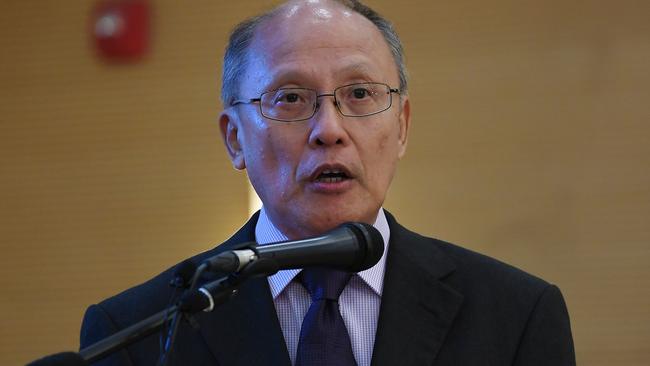MH370 final report: Families say nothing new in 1500-page document
Grieving families have been told investigators stopped collecting suspected debris from MH370 more than six months ago.

The grieving families of passengers and crew from the missing Malaysian Airlines flight MH370 have been told investigators stopped collecting suspected debris from the plane more than six months ago and that there is still no resolution to one of the world’s greatest aviation mysteries.
Some 25 families were briefed this morning in Kuala Lumpur by four members of the MH370 safety investigation team ahead of what authorities had originally said would be the final report by an international safety investigation team appointed more than four years ago to probe the plane’s disappearance.
But relatives of the missing 239 people on board MH370, which left Kuala Lumpur at 12.41 on March 8, 2014, angrily dismissed that yesterday, saying there could be no final report until the plane was finally found.
Families emerged from the two and a half-hour briefing session, some sobbing, others angry at the failure to shed any new light on the plane’s disappearance.
K.S Narendran, whose wife Chandrika Sharma was on the ill-fated flight, told The Australian there was “absolutely nothing new as far as I can tell” from the 1500 page report, which is to be released publicly today.
“The plane took off, it turned back and then disappeared. We don’t know where it went or where it is — that is essentially a summary of this report,” said Mr Narendran, who flew from the southern city of Chennai to attend this morning’s briefing.
“We were hoping at least for some further detail, some pointers about what’s next. Where does this leave the families? We are still trying to make sense of that and I’m not quite sure I have a coherent answer.
“But this is not the final report, this is not the end. We will continue to ask questions about the search,” he added.
The report is understood however to highlight mistakes made in the initial hours and days after the plane’s disappearance, including the fact that only two attempts were made to contact the flight by phone and that the Emergency Locator Transmission batteries in the plane had expired.
“They only relied on Malaysian Airlines’ flight path although they had lost contact with the flight,” Grace Nathan, a spokeswoman for families involved in the Voice370 lobby group, told reporters after this morning’s briefing.
“They couldn’t provide a proper airworthiness report on the missing aircraft.”
Perhaps most surprisingly, investigators revealed they were no longer officially searching for possible debris from the plane.
More than 20 pieces of debris have been found over the years but so far only a sheered piece of the plane’s flaperon on Reunion Island and then a large piece of the aircraft wing in Tanzania have been confirmed as being definitely from flight MH370.
CSIRO researchers also investigating the mystery say drift analysis backtracking the origin of those two pieces is the best way to narrow down the area where the plane most likely crashed.
Ms Nathan, a lawyer whose mother Anne Daisy was on the plane, said investigators had also ruled out any issue with the plane’s cargo, but revealed that the seals on the cargo packing had been tampered with.
The cargo on-board MH370 was the focus ofearly conspiracy theoriesrelating to its disappearance after Malaysian authorities initially refused to disclose that the plane had been carrying a large quantity of potentially flammable lithium batteries.
“We hope that these mistakes will not be repeated and that measures are put in place to prevent them in the future,” she said.
Malaysian Transport Minister Anthony Loke said earlier that “every word recorded by the investigation team (has been) tabled in this report”.
“It (was) tabled fully, without any editing, additions, or redactions,” he said.
Mr Loke was appointed transport minister in May following the shock election defeat of a government which had ruled Malaysia for 61 years.
Within days of his appointment he announced the end of a privately-funded underwater search for the aircraft by US-based firm Ocean Infinity, which covered 112,000 square kilometres in the southern Indian Ocean over three month but made no significant new findings.
Australia had previously led one of the most comprehensive and expensive aviation searches in history, when it scoured 120,000 square kilometre area of southern Indian Ocean at a cost of $180 million.




To join the conversation, please log in. Don't have an account? Register
Join the conversation, you are commenting as Logout